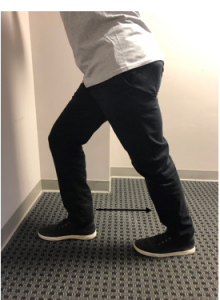
21 Nov The Agony of Defeet: What to do With These Common Foot Conditions
If you’re feet are feeling good, well – you might not even think about them; however, if you’re having pain in your feet (one or both), every single step might be a painful reminder that you need to figure out what’s going on. You can have a variety of issues with your feet, but here are some common issues – as well as what you can do about it.
Stress reaction
What it is: A stress reaction is changes in the bones/tissue of your foot, usually your metatarsals, as they deal with high demands such as distance running, hiking, and sports that involve running and/or jumping. You may experience a stress reaction after a sudden increase in training or if you haven’t had a break in awhile.
What it feels like: You may not notice at first; however, an area with a stress reaction may be sore when pressed or sore during or after activity.
What you can do: The important thing to do is deal with a stress reaction before it becomes a stress fracture. You can cross-train, reduce your activity, and/or rest – also make sure that you’re wearing supportive footwear in good shape. 
Stress fracture
What it is: Uh oh! You didn’t stop that stress reaction when you had a chance and now it’s a stress fracture. A stress-fracture is a small break in a bone, often one of the metatarsals due to work overload.
What it feels like: Depending on where it’s located, and the severity, you’ll notice varying degrees of pain. You may also notice a small, knot-like swelling directly over the injured area. It will be painful to press on, and can hurt at rest.
What you can do: Although it’s often hard to diagnose a stress fracture via x-ray (because the injury is often only seen once healing has begun), the symptoms themselves are pretty clear. You definitely need time off your regular activity, since most stress fractures are a matter of weeks, certainly not days. Depending on the location, you may benefit from a walking boot to keep pressure off the injury.
Plantar fasciitis
What it is: This is inflammation of the thick band of tissue that runs from your heel along the bottom of your foot.
What it feels like: You may notice pain in your heel, especially after waking up or after sitting/lying down for a long period. You may also notice pain in the arch of your foot, although this isn’t as common. Plantar fasciitis can make walking, running, and other activity a real pain.
What you can do: One way to help prevent this is to make sure your calves are loose, which we talked about here. You can do a simple stretch daily (pictured below) to work on loosening up your calf muscles, because tight calves can contribute to plantar fasciitis. If you already have plantar fasciitis, you can roll your arches on a frozen water bottle. Make sure you’re wearing properly fitting shoes in good condition. If you’re a runner with sudden plantar fasciitis, check to see if it’s time to replace your shoes. Physical therapy is also helpful in dealing with both plantar fasciitis and contributing factors.
If you’re dealing with any of these (or other) foot pain or problems, come in and see us at Body One Physical Therapy. Body One physical therapists can assess as well as treat your injury. Worried about needing a referral? Thanks to Direct Access, you’re able to see us for 42 days without needing one! Our team will work with your doctor and insurance company, should more visits or a referral be necessary. We’re locally-owned and operated, with three locations serving Central Indiana: North Indianapolis, Fishers, and Zionsville. Don’t take another painful step – call Body One.





